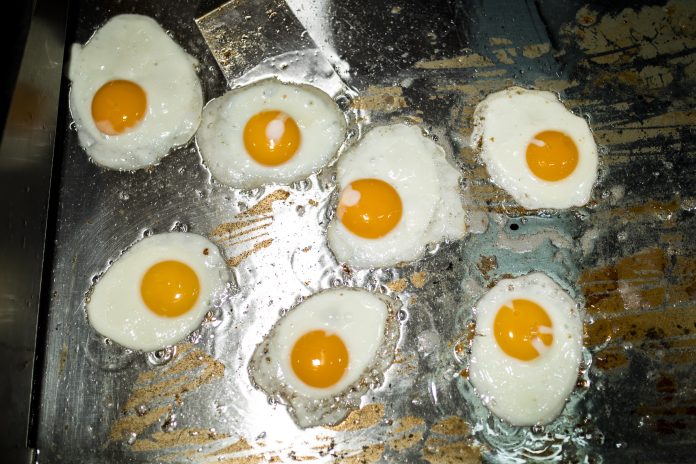Doctors often advise a low sodium, low cholesterol diet for individuals with high blood cholesterol, high blood pressure, or an elevated risk of heart disease. Incorporating whole, minimally processed foods and making lifestyle changes can help lower cholesterol levels without the need for medication.
Cholesterol is a waxy substance vital for producing certain hormones and building cells. While the liver produces all the cholesterol the body requires, additional cholesterol comes from diet. Though essential for health, high cholesterol levels can lead to serious conditions such as heart disease and stroke.
According to the World Heart Federation, high cholesterol, or hypercholesterolemia, is responsible for approximately 4.4 million deaths annually.
Reducing intake of high cholesterol foods and lowering salt consumption may decrease the risk of heart-related health issues.
This article provides an overview of the foods to include in a low sodium, low cholesterol diet and the foods to avoid.
What Is a Low Sodium, Low Cholesterol Diet?
A diet low in sodium and saturated fats can help reduce levels of low-density lipoprotein (LDL), commonly known as “bad” cholesterol, and lower the risk of high blood pressure.
Contrary to earlier beliefs, recent research suggests that dietary cholesterol has minimal impact on blood cholesterol levels. This led the 2015–2020 Dietary Guidelines for Americans to remove the recommendation of limiting dietary cholesterol to no more than 300 milligrams (mg) per day.
The current guidelines emphasize limiting saturated and trans fats. The American Heart Association (AHA) recommends keeping saturated fats to less than 6% of total daily calories, while the 2020–2025 Dietary Guidelines for Americans suggest a limit of 10%.
Diets high in saturated and trans fats can lead to elevated LDL cholesterol levels, which can accumulate in the arteries, causing them to narrow and harden. This increases the risk of blood clots, high blood pressure, and heart disease.
Doctors use a complete cholesterol test, also known as a lipid panel, to check blood cholesterol levels. A high total cholesterol level is 240 milligrams per deciliter (240 mg/dL) or higher, while levels between 200–239 mg/dL are considered borderline high, often due to underlying health issues or lifestyle factors.
To maintain a healthy total cholesterol level below 200 mg/dL, doctors typically recommend a diet low in saturated fat and cholesterol.
The AHA advises that people consume no more than 2,300 mg of sodium per day, equivalent to 1 teaspoon. This includes all sodium from food and added salt. Most people consume at least twice this amount.
Who Benefits from This Diet?
While most people can benefit from reducing their salt intake, a low sodium, low cholesterol diet is particularly beneficial for those with high blood pressure and high blood cholesterol levels. Following this diet can lower the risk of heart disease, heart attack, and stroke.
Foods to Eat on a Low Sodium, Low Cholesterol Diet
Generally, the less processed a food is before it reaches your plate, the healthier it will be. A heart-healthy diet focuses on whole foods with minimal added ingredients.
The nutrition facts label on packaged foods shows serving sizes and the nutrient content per serving as a percentage of the recommended daily intake. Comparing these labels can help you choose options lower in sodium, saturated fat, and added sugars.
Reading ingredient lists on packaged foods is also important. Experts often recommend avoiding products with more than five ingredients. It’s also crucial to avoid trans fats, which may appear as “hydrogenated” or “partially hydrogenated” oils.
Be mindful of alternative names for sodium, such as “sodium benzoate,” “disodium,” or “monosodium glutamate (MSG).”
Preparing meals and snacks at home gives you greater control over your salt and saturated fat intake. Instead of adding salt, try flavoring your food with spices, citrus, and herbs.
Foods to Include:
| Food Group | Examples |
|---|---|
| Fruits and Vegetables | Citrus, apples, grapes, strawberries, dark leafy greens |
| Whole Grains | Oats, barley, spelt, farro, brown rice |
| Proteins | Beans, fish, lentils, skinless chicken breast, eggs, nuts, seeds |
| Dairy | Low-fat yogurt and milk, cottage cheese, mozzarella, feta |
| Oils | Olive oil, canola oil, sunflower oil, corn oil, peanut oil, safflower oil |
| Condiments | Pesto, salsa, mustard, kimchi, raw honey, tamari |
| Seasonings | Cayenne pepper, cinnamon, garlic, ginger, turmeric |
The AHA offers a variety of heart-healthy recipes for meals and snacks.
Foods to Avoid
Below are examples of foods to avoid on a low sodium, low cholesterol diet:
- Fatty cuts of red meat (e.g., beef, lamb, pork)
- Organ meats (e.g., kidney, liver)
- Processed meats (e.g., bacon, sausages, hot dogs)
- Full-fat dairy products (e.g., butter, whole milk, cheese)
- Fried foods (e.g., french fries, fried chicken)
- Baked goods (e.g., cakes, cookies, pastries)
- Desserts (e.g., ice cream, pudding)
- Saturated vegetable oils (e.g., palm oil, coconut oil)
Summary
To reduce the risk of high cholesterol, it’s important to incorporate certain foods into your diet while avoiding others. For those at risk of high cholesterol or high blood pressure, a doctor will recommend foods low in saturated fats, trans fats, and sodium.
Checking nutrition facts labels and ingredient lists can help you make informed food choices. Opting for whole, minimally processed foods and making lifestyle changes, like increasing physical activity and quitting smoking, can also help manage cholesterol levels.



